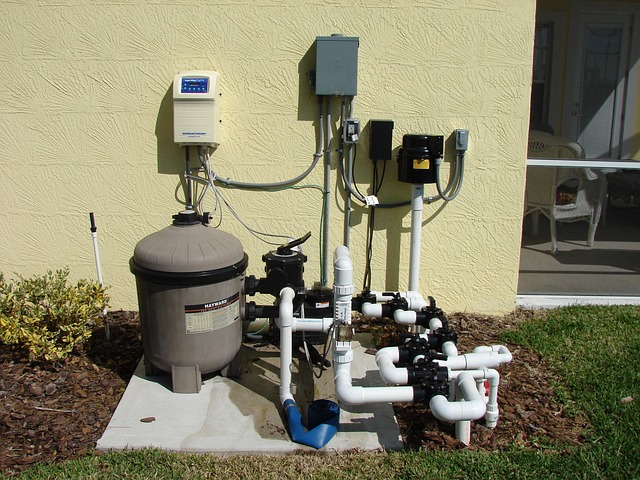Comparing Filtration Technologies: Reverse Osmosis, Activated Carbon and UV Explained
This article clarifies how reverse osmosis, activated carbon and ultraviolet (UV) water treatment methods differ in addressing contaminants such as sediment, chlorine, fluoride and microplastics. It outlines typical installation and maintenance considerations, monitoring and certification points, and factors like efficiency and sustainability to help readers compare technologies for household or small-scale use.

Water quality issues can include visible sediment, unpleasant taste, dissolved chemicals, microbial risks and microscopic particles such as microplastics. Understanding how different filtration approaches work helps match a system to the contaminants present and to installation and maintenance capacity. This article compares three common technologies—reverse osmosis, activated carbon and ultraviolet (UV)—and examines membrane function, chemical removal, microbial control, monitoring and sustainability considerations for residential or small-scale deployments.
How does filtration target contaminants?
Filtration encompasses mechanical, adsorptive and membrane processes to remove contaminants. Mechanical filters capture sediment and larger particles, while adsorptive media, notably activated carbon, reduce chlorine and many organic chemicals that affect taste and odor. Membrane-based systems such as reverse osmosis address dissolved salts and certain small particles, including some microplastics depending on size. Effective monitoring and certification help confirm removal rates for specific contaminants and support informed choices about multi-stage configurations.
What is reverse osmosis and how does the membrane work?
Reverse osmosis relies on a semipermeable membrane with very small pores to separate dissolved ions and many organic molecules from water. Pressure forces water through the membrane, leaving a concentrated reject stream of contaminants. Pre-filters for sediment and activated carbon protect the membrane from fouling by particles and chlorine. Reverse osmosis reduces fluoride and many dissolved minerals; however, it can also remove desirable minerals and generates some wastewater during operation, factors to weigh when assessing efficiency and sustainability.
How does activated carbon affect taste and chemicals?
Activated carbon operates by adsorption: contaminants adhere to the porous surface of the carbon media. This is particularly effective for chlorine, volatile organic compounds and other taste- or odor-causing chemicals, improving overall palatability. Activated carbon does not reliably remove dissolved salts, fluoride or most microbes, so it is commonly used in combination with other technologies. Filter life depends on contaminant load and flow rate; scheduled replacement and product certification for specific contaminant reductions are important for consistent performance.
Where does ultraviolet (UV) fit for microbial control and microplastics?
Ultraviolet disinfection inactivates bacteria, viruses and other microorganisms by damaging genetic material, providing a chemical-free disinfection step. UV does not remove particles, dissolved chemicals or minerals, and it has no direct effect on microplastic particles beyond possible secondary impacts if microbes are attached. For UV to be effective the water must be clear, so sediment and carbon stages are typically installed upstream. UV systems require reliable power, periodic lamp replacement and monitoring of lamp output to maintain disinfection efficacy.
What should users consider for installation, maintenance and monitoring?
Installation complexity varies: point-of-use activated carbon filters are usually simple to fit, while reverse osmosis systems often need a dedicated faucet, fittings, a drain connection and sometimes a pressurized storage tank. UV units need safe electrical connections and protective housings. Maintenance includes replacing sediment and carbon cartridges, membrane replacement for reverse osmosis, and lamp changes for UV. Regular monitoring—through built-in indicators, periodic test strips or certified laboratory testing—helps verify contaminant reductions and ensures systems meet certification claims.
How do efficiency, certification and sustainability influence choice?
Efficiency encompasses contaminant removal effectiveness and resource use; reverse osmosis systems can waste water during rejection, affecting sustainability. Certification from recognized bodies for specific reductions—sediment, chlorine, fluoride, microbial inactivation—provides objective performance benchmarks. Consider whether retaining minerals for taste or health matters; some systems include remineralization stages after membrane treatment. Long-term sustainability also involves energy needs (for pumps or UV), filter lifespans and the environmental footprint of disposable components.
This article is for informational purposes only and should not be considered medical advice. Please consult a qualified healthcare professional for personalized guidance and treatment.
Selecting between reverse osmosis, activated carbon and UV depends on the local water profile, the contaminants of concern, installation constraints and how much maintenance and monitoring you can support. Multi-stage systems that combine sediment removal, activated carbon adsorption, membrane filtration and UV disinfection often provide broader protection against a range of contaminants while allowing for certification-based comparison and performance monitoring. Assess efficiency and sustainability alongside verified reduction rates to choose a system that aligns with needs and priorities.




